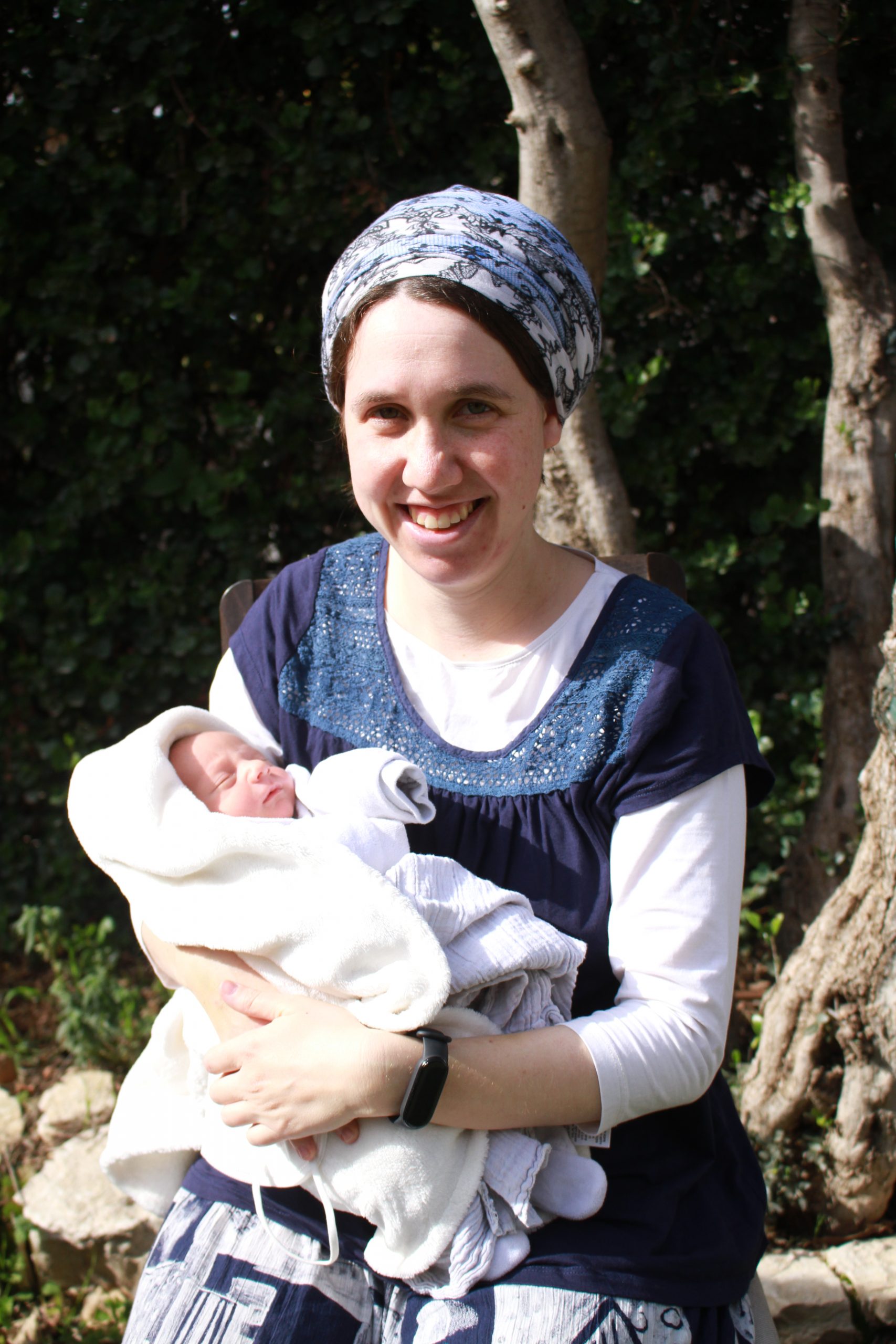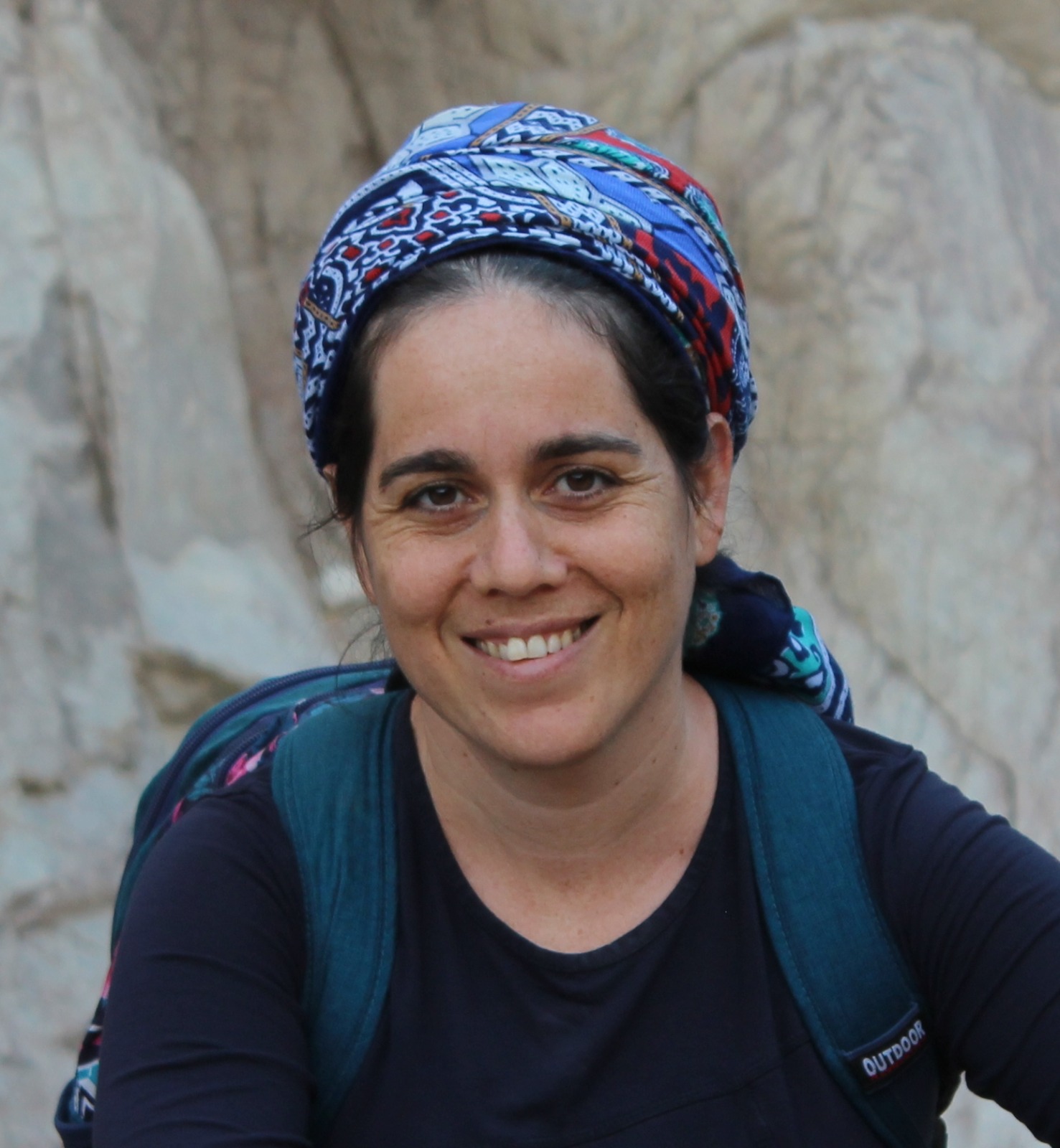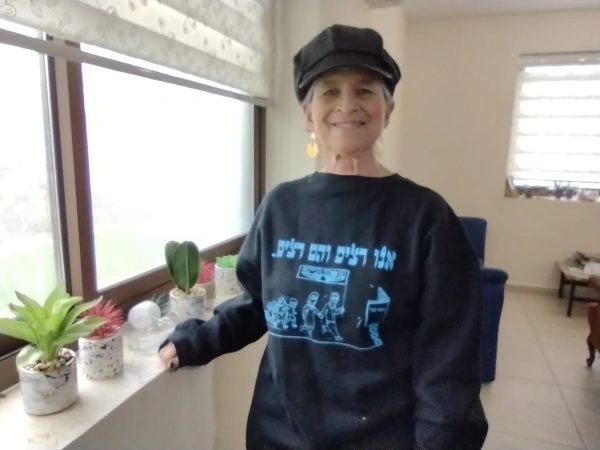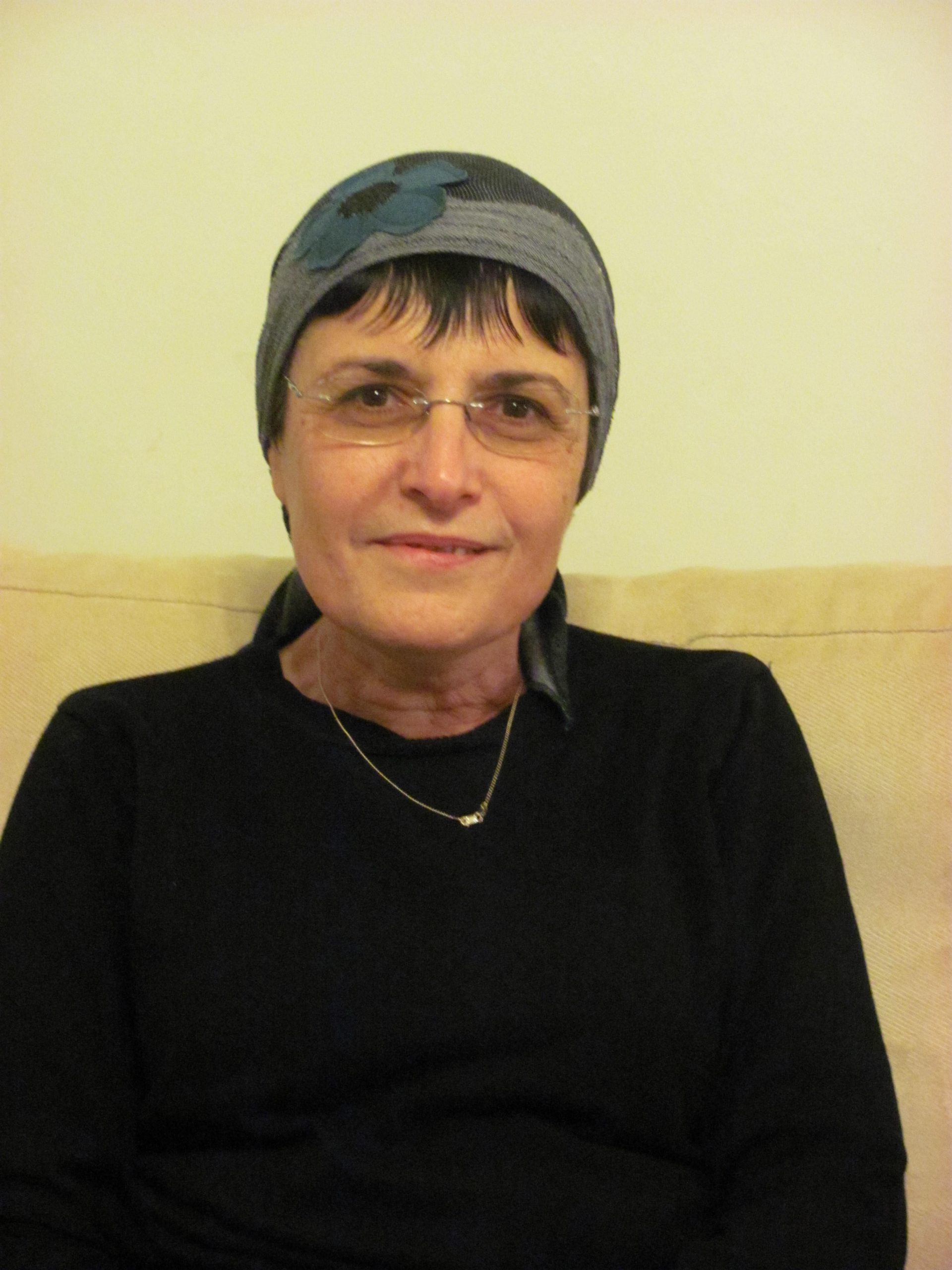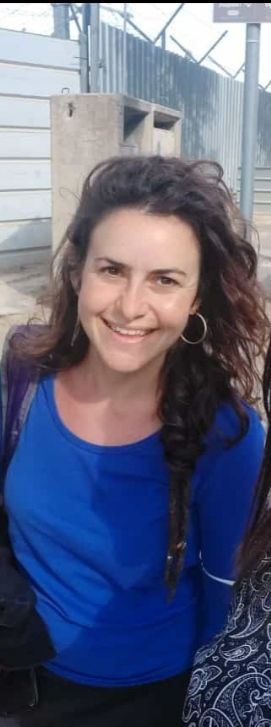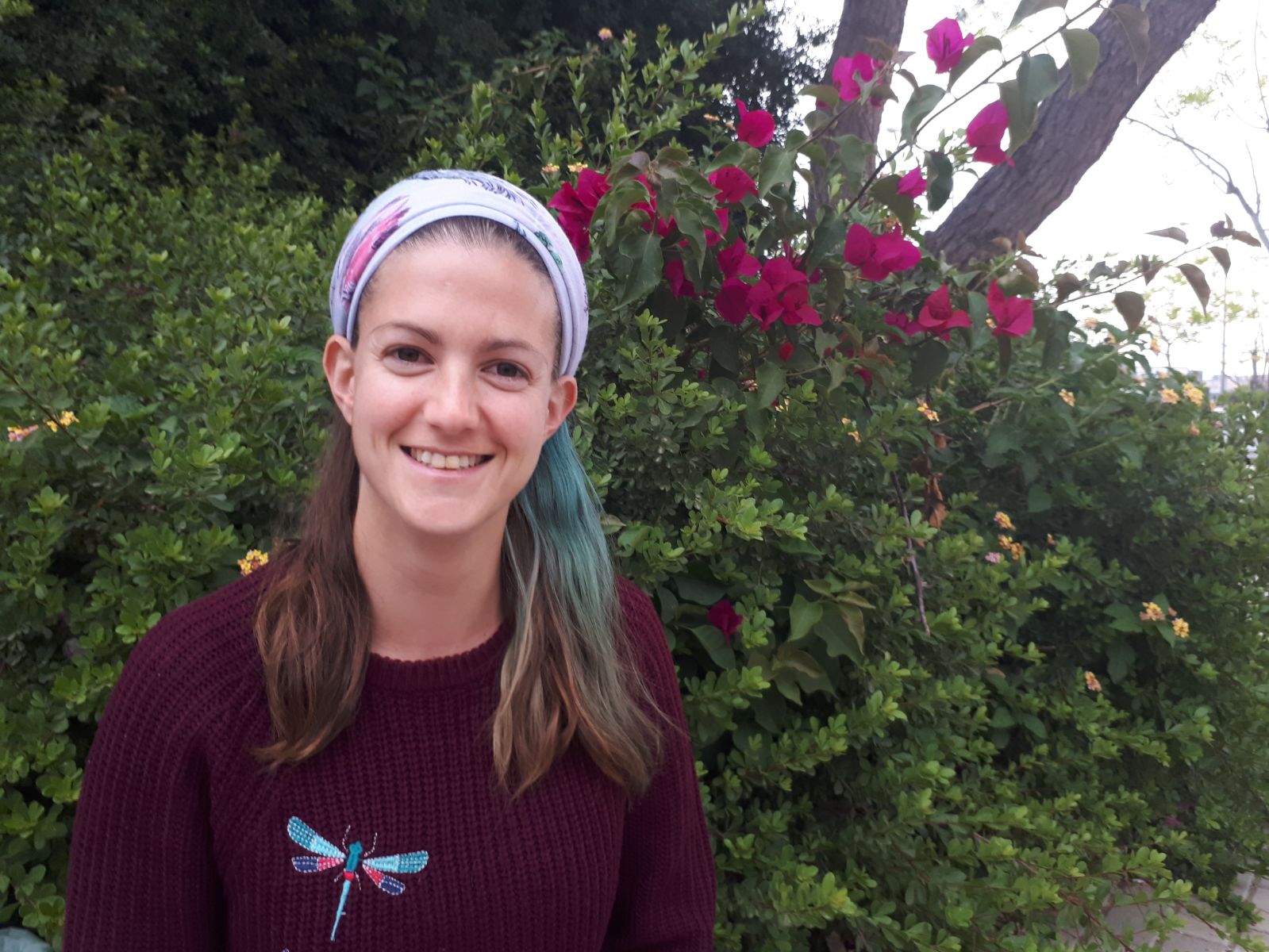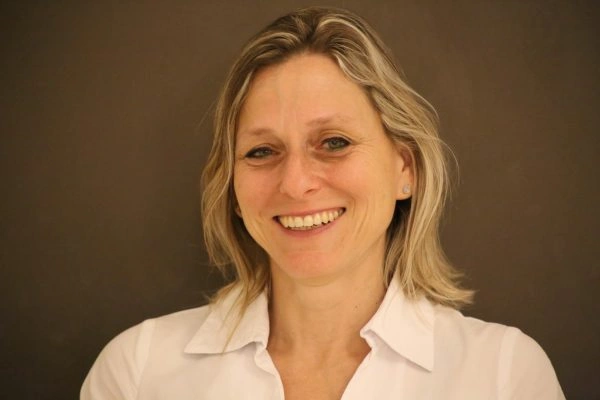בגלל שיש הגדרות שונות לסימני טריפה בחלקים שונים של הגוף, הגמרא דנה במהן בבחתלות והסוף של חלקים מסויימים כדי לדעת באיזה שיעור נקב תהיה הבהמה טריפה?
לימוד השבוע מוקדש ע”י טינה לם לע”נ יצחק מאיר בן הרב צבי אריה ואסתר בתיה.
רוצים להקדיש למידה? התחל כאן:
לימוד השבוע מוקדש ע”י טינה לם לע”נ יצחק מאיר בן הרב צבי אריה ואסתר בתיה.
העמקה
רוצה להבין מה באמת קורה מתחת לפני השטח של הסוגיה?
שיעורים, פודקאסטים והרחבות של מיטב המורות שלנו יפתחו לך עוד זוויות וכיווני חשיבה.
חדשה בלימוד הגמרא?
זה הדף הראשון שלך? איזו התרגשות עצומה! יש לנו בדיוק את התכנים והכלים שיעזרו לך לעשות את הצעדים הראשונים ללמידה בקצב וברמה שלך, כך תוכלי להרגיש בנוח גם בתוך הסוגיות המורכבות ומאתגרות.
פסיפס הלומדות שלנו
גלי את קהילת הלומדות שלנו, מגוון נשים, רקעים וסיפורים. כולן חלק מתנועה ומסע מרגש ועוצמתי.
חולין מה
אתייקורי הוא דמתייקרו בי
It is an honor for them to honor me. My attendance is not for my benefit but for theirs.
אמר רב יהודה אמר רב ניקבה כנפה מצטרפים לרובא
§ With regard to the halakha that a cut windpipe renders the animal a tereifa, Rav Yehuda says that Rav says: If the windpipe was perforated with a series of small holes around its circumference like a sieve, the small holes join together to constitute a majority of the circumference. Therefore, if their collective size is a majority of the circumference, the windpipe is considered cut.
מתיב רב ירמיה ובגולגולת שיש בה נקב אחד ארוך אפילו יש בה נקבים הרבה מצטרפים למלא מקדח אלמא כיון דשיעורה מלא מקדח למלא מקדח מצטרפין ה”נ כיון דשיעוריה כאיסר לכאיסר מצטרפין
Rav Yirmeya raises an objection: The mishna teaches (Oholot 2:3) that if a skull of a corpse has a round hole at least the size of a drill bit used for surgery, then the skull does not impart ritual impurity in a tent. With regard to this, a baraita states: And in a skull that contains one long hole, or even if it has many small holes, the areas of the holes join together to constitute the size of a drill hole. Evidently, since the requisite measure is the size of a drill hole, the small holes join together to constitute the size of a drill hole, and not another measure. If so, here, too, in the case of the windpipe, since the requisite measure of a hole to render the animal a tereifa is the size of an issar (see 54a), the small holes should join together to constitute the size of an issar. Why must they constitute the majority of the circumference?
אישתמיטתיה הא דאמר רבי חלבו אמר רב חמא בר גוריא אמר רב נקבים שיש בהן חסרון מצטרפין לכאיסר ושאין בהן חסרון מצטרפין לרובא
The Gemara notes: It escaped him, i.e., Rav Yirmeya, that which Rabbi Ḥelbo says that Rav Ḥama bar Gurya says that Rav says: Perforations that are a deficiency, i.e., holes of significant area, join together to constitute the size of an issar, and perforations that are not a deficiency, but are as small as the holes of a sieve, must join together to constitute a majority of the circumference, which is the measure of a cut windpipe. Since the holes are not substantial in area, the windpipe cannot be said to be missing a piece, but it may be considered cut.
אמר רבה בר בר חנה א”ר יהושע בן לוי ניטלה הימנה רצועה מצטרפת לכאיסר בעא מיניה רבי יצחק בר נחמני מרבי יהושע בן לוי ניקבה כנפה מהו אמר ליה הרי אמרו נקבים שיש בהן חסרון מצטרפין לכאיסר ושאין בהן חסרון מצטרפין לרובא
Rabba bar bar Ḥana says that Rabbi Yehoshua ben Levi says: If a strip of the windpipe was removed from it, its area joins to constitute the size of an issar, even if the strip itself is narrower than an issar. Rabbi Yitzḥak bar Naḥmani asked Rabbi Yehoshua ben Levi: If the windpipe was perforated like a sieve, what is the halakha? Rabbi Yehoshua ben Levi said to him: The Sages said with regard to this case: Perforations that are a deficiency join together to constitute the size of an issar, and perforations that are not a deficiency join together to constitute a majority of the circumference.
בעופא מאי
The Gemara raises a question: The measure of an issar for missing flesh in the windpipe applies only to animals. In birds, this cannot be the measure, as the entire width of the windpipe is less than the diameter of an issar. What, then, is the measure with regard to a bird?
אמר רבי יצחק בר נחמני לדידי מפרשא לי מיניה דרבי אלעזר מקפלו ומניחו על פי הקנה אם חופה את רוב הקנה טרפה ואם לאו כשרה אמר רב פפא וסימניך נפיא
Rabbi Yitzḥak bar Naḥmani said: It was explained to me personally by Rabbi Elazar: One severs the perforated tissue, folds and lays it over the opening of the windpipe. If it covers the majority of the windpipe, the animal is a tereifa; and if not, the animal is kosher. Rav Pappa said: And your mnemonic for this halakha should be a sieve. If the tissue is perforated like a sieve, one must place it over the opening of the windpipe as if it were a sieve.
נפחתה כדלת אמר רב נחמן כדי שיכנס איסר לרחבו נסדקה אמר רב אפילו לא נשתייר בה אלא חוליא אחת למעלה וחוליא אחת למטה כשרה
The Gemara continues: If the windpipe was missing a piece so that its appearance was like a door, where the missing flesh was partially attached as though on a hinge, Rav Naḥman said: If the missing piece is so large that an issar can enter the hole widthwise, i.e., it is wider and taller than an issar, the animal is a tereifa. If the windpipe was cracked along its length, Rav said: Even if only one undamaged segment remains in the windpipe above the crack and one segment below it, the animal is kosher.
אמרוה קמיה דרבי יוחנן אמר מה חוליא ומה חוליא דקאמר רב אלא אימא אפילו לא נשתייר בה אלא משהו למעלה ומשהו למטה כשרה
The Sages said this statement before Rabbi Yoḥanan, who said: What is this segment and what is that segment that Rav says? Segments are immaterial to the matter. Rather, say: Even if any amount remained intact in the windpipe above the crack, and any amount below, the animal is kosher.
אמרוה קמיה דרבי יוחנן משמיה דרבי יונתן הכי אמר להו ידעין חברין בבלאי לפרושי כי האי טעמא
The Sages said this statement in Eretz Yisrael before Rabbi Yoḥanan in the name of Rabbi Yonatan the Babylonian, i.e., that any amount of undamaged tissue above and below the crack renders the animal kosher. Rabbi Yoḥanan said to them, excitedly: Do our Babylonian friends know how to interpret in accordance with this explanation? He was happy that Rabbi Yonatan interpreted it the same way he did.
תנא רבי חייא בר יוסף קמיה דרבי יוחנן כל הצואר כולו כשר לשחיטה מטבעת הגדולה עד כנפי ריאה התחתונה אמר רבא תחתונה שהיא עליונה שאני אומר כל שפושטת צוארה ורועה ובלבד שלא תאנס
§ Rabbi Ḥiyya bar Yosef taught before Rabbi Yoḥanan: The entire neck is fit for slaughter, from the large uppermost ring of the windpipe downward until the lower edges of the lung. Rava says that the phrase: Lower edges of the lung, is referring to an animal hung by the feet; that is, it actually denotes the upper edges nearest the head. As I say that the area fit for slaughter is all the length of the neck that an animal extends in order to graze, provided that it is not forced to extend its neck further than it wishes. Consequently, the very bottom of the neck is not a location fit for slaughter.
בעי רב חנינא ואיתימא רב חנניה אנסה עצמה מהו תיקו יתיב רבי יוחנן ורשב”ל נפק מילתא מבינייהו אנס בסימנים ושחט פסולה ניקב הקנה למטה מן החזה נידון כריאה
Rav Ḥanina, and some say Rav Ḥananya, raises a dilemma: If the animal forced itself and extended its neck, what is the halakha with regard to the additional area? The Gemara responds: The question shall stand unresolved. The Gemara relates that Rabbi Yoḥanan and Rabbi Shimon ben Lakish sat together, and a matter emerged from between them: If the slaughterer forced the animal to extend the simanim by stretching the neck and slaughtered the animal at the lower end of the neck, the slaughter is not valid. And if the windpipe was perforated below the breast, it is considered to be like a perforated lung, which renders the animal a tereifa no matter the size of the perforation. A perforation in the upper windpipe must be the size of an issar to render the animal a tereifa (see 54a).
תנו רבנן איזהו חזה זה הרואה את הקרקע למטה עד הצואר למעלה עד הכרס חותך שתי צלעות משתי דפנות אילך ואילך וזהו חזה הניתן לכהנים:
The Gemara elaborates: The Sages taught in a baraita: Which is the breast that must be given to the priests as a gift from every peace offering (see Leviticus 7:31)? This is the section that faces the ground, not the ribbed area on the sides. And lengthwise it extends below, when the animal is hung from the legs, until the neck, and above until the rumen. One cuts the two ribs nearest the head from the two sides of the animal from both directions, and this is the breast that is given to the priests.
ניקב קרום של מוח: רב ושמואל דאמרי תרוייהו קרמא עילאה אע”ג דלא אינקיב תתאה ואמרי לה עד דאינקיב תתאה אמר רבי שמואל בר נחמני וסימניך חייתא דמתנח ביה מוחא
§ The mishna states: If the membrane of the brain was perforated, the animal is a tereifa. The Gemara cites Rav and Shmuel, who both say: The brain is covered by two membranes, a thick outer membrane adjacent to the skull and a thin inner membrane adjacent to the brain. The animal is a tereifa if the outer membrane was perforated, even if the inner membrane was not perforated. And some say that the animal is not a tereifa unless the inner membrane was perforated as well. Rabbi Shmuel bar Naḥmani says: And this is your mnemonic to remember the halakha: The bag in which the brain rests, i.e., the inner membrane.
אמר רבה בר בר חנה אמר רבי יהושע בן לוי כנגדו בביצים ניכר א”ר שמעון בן פזי אמר ריב”ל משום בר קפרא מוח כל מה שבקדירה נדון כמוח התחיל למשוך נדון כחוט השדרה ומהיכן מתחיל לימשך אמר רבי יצחק בר נחמני לדידי מיפרשא לי מיניה דרבי יהושע בן לוי כמין שני
Rabba bar bar Ḥana says that Rabbi Yehoshua ben Levi says: Even though the inner membrane of the brain is very thin and not easily visible, its equivalent in the testicles, which are also enclosed in a thin membrane, is conspicuous, as it has an appearance different from the testicles themselves. Rabbi Shimon ben Pazi says that Rabbi Yehoshua ben Levi says in the name of bar Kappara: With regard to the brain, everything inside the skull is considered part of the brain. From the point where it begins to extend like a cord out of the base of the skull, it is considered the spinal cord. And from where does it begin to be extended? Rabbi Yitzḥak bar Naḥmani said: It was explained to me personally by Rabbi Yehoshua ben Levi himself: Protrusions similar to two
פולין יש מונחין על פי הקדרה מן הפולין ולפנים כלפנים מן הפולין ולחוץ כלחוץ ופולין עצמן איני יודע ומסתברא כלפנים
beans lie at the opening of the skull, where the spinal cord exits. From the beans inward, the nerve tissue is considered like the inside, i.e., the brain. Therefore, if its membrane is perforated, even minimally, the animal is a tereifa. From the beans outward, the nerve tissue is considered like the outside, i.e., the spinal cord. A perforation of the membrane in this area renders the animal a tereifa only if the spinal cord is mostly cut. And with regard to the area of the beans themselves, I do not know what the halakha is; but it stands to reason that it is considered like the inside.
רבי ירמיה בדק בעופא ואשכח כמין שני פולין מונחין על פי הקדרה:
The Gemara relates that Rabbi Yirmeya inspected a bird and found protrusions similar to two beans lying on the opening of the skull.
ניקב הלב לבית חללו: בעי רבי זירא לבית חלל קטן או לבית חלל גדול א”ל אביי מאי תיבעי לך מי לא תנן ר”ש אומר עד שתנקב לבית הסמפונות ואמר רבה בר תחליפא אמר רבי ירמיה בר אבא אמר רב עד שתנקב לסמפון גדול
§ The mishna states: If the heart was perforated to its chamber, the animal is a tereifa. Rabbi Zeira raises a dilemma: Is the mishna referring to the small chamber within the heart or to the large chamber? Abaye said to him: What is your dilemma? Didn’t we learn in the mishna with regard to the lung: Rabbi Shimon says: It is not a tereifa unless it is perforated through to the bronchi? And Rabba bar Taḥlifa says that Rabbi Yirmeya bar Abba says that Rav says: Rabbi Shimon means that it is not a tereifa unless it is perforated through to the large bronchus. If so, it may be presumed that the mishna is referring to the large chamber of the heart as well.
הכי השתא התם לבית הסמפונות קתני להיכא דשפכי סמפונות כולהו והכא לבית חללו קתני מה לי חלל גדול מה לי חלל קטן
The Gemara responds: How can these cases be compared? There, the mishna teaches: To the bronchi [simponot], in the plural form, i.e., the one bronchus into which all the bronchi [simponot] empty out. But here, with regard to the heart, it teaches: To the chamber. What is it to me if this is a large chamber and what is it to me if it is a small chamber? The language does not indicate one or the other.
קנה הלב רב אמר במשהו ושמואל אמר ברובו
§ With regard to the aorta, the chief artery exiting the heart, Rav says: Like the heart itself, if it is perforated in any amount the animal is a tereifa. And Shmuel says: The animal is a tereifa only if the aorta is perforated in its majority.
הי ניהו קנה הלב אמר רבה בר יצחק אמר רב חלב שעל גבי דפנות דפנות סלקא דעתך אלא שעל גבי דופני ריאה
The Gemara asks: Which blood vessel is the aorta? Rabba bar Yitzḥak says that Rav says: This is the artery found in the fat on the sides. The Gemara asks: Can it enter your mind to say that this is referring to the sides of the animal, i.e., the ribs, which are not adjacent to the heart? Rather, this is referring to the artery covered in fat that exits the heart and passes on the sides of the lung.
אמר אמימר משמיה דרב נחמן תלתא קני הוו חד פריש לליבא וחד פריש לריאה וחד פריש לכבדא דריאה כריאה דכבדא ככבדא דליבא פליגי
Ameimar says in the name of Rav Naḥman: There are three ducts adjacent to one another in an animal’s chest. One separates to the heart, and one separates to the lung, and one separates to the liver. The duct of the lung is treated like the lung, and renders the animal a tereifa if perforated in any amount. The duct of the liver is treated like the liver, and only if it is completely missing does it render the animal a tereifa, in accordance with the mishna. As for the duct of the heart, the aorta, Rav and Shmuel disagree as to the measure of its perforation, as mentioned above.
מר בר חייא מתני איפכא דריאה ככבדא דכבדא כריאה דליבא פליגי
Mar bar Ḥiyya teaches the opposite: The duct of the lung is treated like the liver and renders the animal a tereifa only if it is completely missing. The duct of the liver is treated like the lung, and a perforation of any amount renders the animal a tereifa. And with regard to the duct of the heart, Rav and Shmuel disagree.
אזל רבי חייא בר יוסף אמרה לשמעתא דרב קמיה דשמואל א”ל אי הכי אמר אבא לא ידע בטרפות ולא כלום:
The Gemara relates that Rabbi Ḥiyya bar Yosef went and stated the halakha of Rav, that an aorta perforated in any amount renders an animal a tereifa, before Shmuel. Shmuel said to him: If Abba, i.e., Rav, actually said so, he knows nothing at all about tereifot.
נשבר השדרה: ת”ר חוט השדרה שנפסק ברובו דברי רבי רבי יעקב אומר אפילו ניקב
§ The mishna states: If the spinal column was broken and its cord was cut, the animal is a tereifa. With regard to this the Sages taught: If the spinal cord was cut in its majority, the animal is a tereifa. This is the statement of Rabbi Yehuda HaNasi. Rabbi Ya’akov says: It is a tereifa even if the spinal cord was only perforated.
הורה רבי כרבי יעקב אמר רב הונא אין הלכה כרבי יעקב
The Gemara notes: Rabbi Yehuda HaNasi ruled in accordance with the opinion of Rabbi Ya’akov that even a small perforation of the spinal cord renders the animal a tereifa. Rav Huna says: The halakha is not in accordance with the opinion of Rabbi Ya’akov.
וכמה רובו רב אמר רוב עורו ואמרי לה רוב מוחו
The Gemara asks: And how much is considered a majority of the spinal cord to render the animal a tereifa? Rav says: A majority of the circumference of its surrounding membranes, the meninges. And some say a majority of the nerve tissue of the spinal cord itself. In other words, even if the meninges are intact, the animal is a tereifa if a majority of the nerve tissue is cut.
מאן דאמר רוב מוחו כ”ש רוב עורו למאן דאמר רוב עורו רוב מוחו מאי
The Gemara notes: According to the one who says that the animal is a tereifa if a majority of the nerve tissue is severed, all the more so if a majority of the meninges is cut, since if the meninges, the protective membranes, are damaged, the nerve tissue itself will certainly be damaged soon thereafter. But according to the one who says that a tear in a majority of the meninges renders it a tereifa, what is the halakha in a case where only a majority of the nerve tissue was cut? Perhaps the intact membranes will keep the damage from spreading.
ת”ש דאמר ניולי אמר רב הונא רובו שאמרו רוב עורו מוח זה לא מעלה ולא מוריד
The Gemara suggests: Come and hear a proof: As Nayyoli says that Rav Huna says: The majority of the spinal cord, which they said renders the animal a tereifa if cut, is the majority of the meninges. But this nerve tissue makes no difference.
רב נתן בר אבין הוה יתיב קמיה דרב בדק ברוב עורו וקא בדיק ברוב מוחו א”ל אם רוב עורו קיים מוח זה אינו מעלה ואינו מוריד
The Gemara relates that Rav Natan bar Avin was sitting before Rav. Rav Natan first checked the spinal cord to make sure that a majority of the meninges was intact, and then was checking to see that a majority of its nerve tissue was intact. Rav said to him: If a majority of the meninges is intact, this nerve tissue makes no difference.
אמר רבה בר בר חנה אמר רבי יהושע בן לוי נתמרך פסול נתמסמס פסול איזוהי המרכה ואיזוהי המסמסה המרכה כל שנשפך כקיתון מסמסה כל שאינו יכול לעמוד
§ Rabba bar bar Ḥana says that Rabbi Yehoshua ben Levi says: If the spinal cord was liquefied [nitmareikh], the animal is unfit for consumption. Even if it softened [nitmasmeis], the animal is unfit, i.e., a tereifa. What is liquefaction, and what is softening? Liquefaction is any case in which the nerve tissue becomes liquid, and if the membrane is punctured it can be poured out like water from a jug. Softening is any case in which the nerve tissue cannot stand upright on its own and sags when it is not being supported.
בעי רבי ירמיה אינו יכול לעמוד מפני כבדו מאי תיקו בי רב אמרי נתמסמס פסול נתמזמז כשר מיתיבי רשב”א אומר בהמה שנתמזמז מוחה טרפה ההיא נתמסמס איתמר
Rabbi Yirmeya raises a dilemma: In a case where the spinal cord became unusually heavy such that it cannot stand upright due to its weight, but not due to softening or melting, what is the halakha? The Gemara responds: The question shall stand unresolved. In the study hall they say: If the spinal cord softened due to disease, the animal is unfit for consumption. But if some of its tissue softened and was emptied from the spinal cord, the animal remains kosher. The Gemara raises an objection based on a baraita: Rabbi Shimon ben Elazar says: An animal whose nerve tissue was emptied [nitmazmez] from the spinal cord is a tereifa. The Gemara responds: That version of the baraita is incorrect. In fact, the word softened [nitmasmes] was stated, not the word emptied.
איני והא לוי הוה יתיב בי מסותא חזייא לההוא גברא דטרייה לרישיה אמר נתמזמז מוחיה דדין לאו דלא חיי אמר אביי לא לומר שאינו מוליד
The Gemara asks: Is that so, that an animal whose nerve tissue has dissolved is kosher? But didn’t it happen that Levi was sitting in the bathhouse, where he saw a certain man who banged his head severely, whereupon he said: This man’s nerve tissue has softened and been emptied? Is it not that Levi meant that the man cannot live? If so, the softening and emptying of the nerve tissue should render an animal a tereifa. Abaye said: No, he intended to say that the man cannot reproduce, since head trauma might lead to infertility.
עד היכן חוט השדרה אמר רב יהודה אמר שמואל עד בין הפרשות
§ The Gemara asks: Until where does the spinal cord extend downward, such that if it is cut above that point the animal is a tereifa? Rav Yehuda says that Shmuel says: Until the point between the branches of the spinal cord that split off behind the thighs.
רב דימי בר יצחק הוה קא בעי למיזל לבי חוזאי אתא לקמיה דרבי יהודה אמר ליה ליחוי לי מר בין הפרשות היכא א”ל זיל אייתי לי גדי ואחוי לך אייתי ליה גדי שמינה א”ל בליעה טפי ולא ידיע אייתי ליה כחוש א”ל בליטן טפי ולא ידיע
The Gemara recounts: Rav Dimi bar Yitzḥak wanted to go to Bei Ḥozai. He came before Rabbi Yehuda and said to him: Master, show me, where is the area between the branches to which Shmuel referred? Rabbi Yehuda said to him: Go bring me a kid and I will show you. Rav Dimi bar Yitzḥak brought him a choice kid with much fat. Rabbi Yehuda said to him: The location is buried very deep in the fat and is not recognizable. He brought Rabbi Yehuda a lean kid. Rabbi Yehuda said to him: The bones jut out very far, and the location is not recognizable.
א”ל תא אגמרך גמרא הכי אמר שמואל עד אחת טרפה שלישית כשרה שניה איני יודע
Rabbi Yehuda said to him: Come, I will teach you a tradition without showing you: This is what Shmuel said: There are three successive points around the same bone behind the pelvis at which branches diverge from the spinal cord. If the spinal cord is cut anywhere until the first gap between these branches, the animal is a tereifa. If it is severed anywhere after the third gap, i.e., after the third branch, the animal is kosher. If it was severed within the second gap, i.e., between these areas, I do not know the halakha.
Rav Huna, son of Rav Yehoshua, raises a dilemma:



















